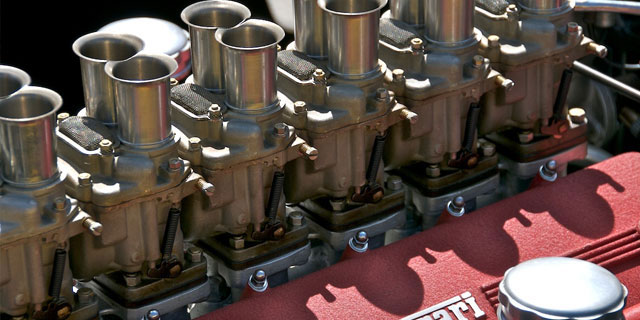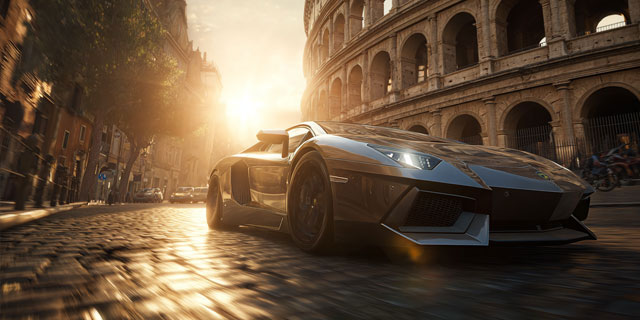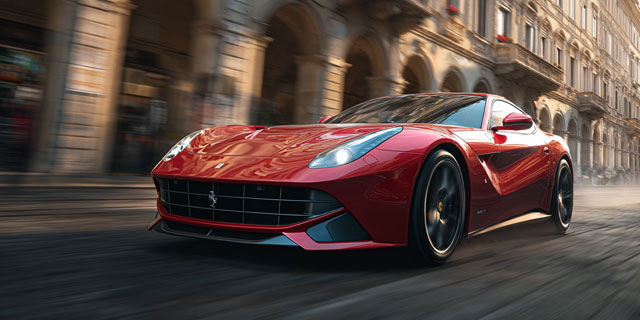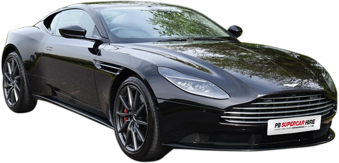The future of the V12
The V12 engine has been such an important part of supercar history, but is it now being confined to history?

To survive the V12 must now evolve. As emission rules and regulations tighten and the electrification of supercars continue to accelerate, the traditional V12 engine technology must adapt to survive.
Supercar hire manufacturers such as Ferrari, Lamborghini and Aston Martin have turned to hybrid technology, choosing to develop their V12 heritage alongside new electric motors, using both in new models.
Pure petrol V12s will become rarer, but will in some guise, still exist in these new hybrid models.
The Evolution of the V12
It is no surprise supercar hire enthusiasts desperately hold on to the idea that the V12 still has a future in this bright new future of supercars. Few sounds can stir such feelings within the fans as the growl of the V12. It signals an emotional connection between the driver and the car, their dreams and fantasies. It is more than just a lump of metal and hot engine fluids.
For over a century now, the V12 has been the beating heart of the supercar movement. It has been a huge statement of power, gloriously over-engineered and some would argue, totally unnecessary, but in a world of compromise and practicality, is there still a place for the V12?
Electrification is rapidly the market for supercars, so will they force the V12 to quietly disappear over the horizon?

Ferrari V12 Engine

Thye Lamborghini Countach V1
The Birth of the V12
The V12 story begins with the birth of the performance car. In the early 1900s, the early car engineers were pushing the boundaries to what the new internal combustion technology could achieve. With much experimentation, they discovered a simple, but effective solution. Design an engine with twelve cylinders arranged in a “V” shape. This offers power, but also balance and smoothness. The concept was simple. This design allows for shorter pistons which in turn fired using shorter strokes. The result was less vibration, which in turn allowed the engineers to provide more capacity, giving yet more power. Perfect.
The first production car to use a V12 was the Packard Twin Six. Introduced in 1915, this was a 6.9 litre engine developed by the Packard Motor Car Company of Detroit based in Michigan. Jesse G. Vincent, their lead engineer, pioneered the development of the new V12 which all future V12s can trace their lineage back to. It was astounding in that it provided massive amounts of power, but did so with relative ease - something extremely rare in those early days of crude engines and rough rides.
Other early performance car manufacturers quickly took note and developed their own V12s, including such alumni as Rolls Royce, who went on to take the technology to a whole different level, including the development of the pivotal V12 that entered service in the iconic Spitfire, a 27 litre fighter engine which changed the course of the second world war.

The golden age of the V12 - The Lamborghini Aventador

The spectacular Ferrari F12 Berlinetta
The Golden Age of the V12
The V12 cemented its place in history during the post-war period as the world found new sources of oil and a desire to build faster and more powerful supercars. During this time car manufacturers such as Ferrari really began to dominate. Enzo Ferrari introduced the 125 S in 1947, powered by a revolutionary 1.5 litre V12. It became the new benchmark in V12 technology, being a lightweight, powerful unit that sounded amazing. Variations of this design were used in Ferrari throughout the 1950s and 1960s and their collaboration with design houses such as Pininfarina transformed the company into world leaders.
This was only challenged by the emergence of Lamborghini, who arrived with their own V12 masterpiece designed by former Ferrari engineer Giotto Bizzarrini. To read more about this process, read our article on the history of Lamborghini. This 3.5 litre V12 was something else and powered a generation of Lamborghini supercars such a the legendary Miura which is widely considered the world’s first true supercar.
The V12 became the engine configuration of choice and all other supercar manufacturers introduced their own, which gave us magnificent cars such as the Aston Martin DB5.
Does the V12 still have a place in supercar design?
It is going to be very difficult to improve on the brilliance of the V12 design. It has the perfect balance between power and being able to run smoothly. V8 is fine, but tends to produce a more ‘bouncing’ rhythm compared to the gentle growl of a V12. This balance allows designers to develop immense power, but still maintain a car with sophistication. We still have the V12 in modern classics such as the Lamborghini Aventador or Ferrari F12 Berlinetta, so not all V12 are museum pieces. Car drivers still want to experience the V12, so they might not be disappearing just yet.
However, we face increasing challenges due to stricter and stricter emissions regulations and changing customer tastes and sensibilities. Manufacturers are being forced to adapt, whether they want to or not. Ferrari have turned to hybrids, using their V12s alongside electric motors to preserve power and drive experience while meeting emission standards. The new Ferrari 812 Competizione shows that Ferrari are still committed to producing a car with a normally aspirated V12. Lamborghini has faced up to the challenge with the magnificent Revuelto, a hybrid V12 that produces a massive 1001 bhp. This shows how manufacturers are not only facing up to the new challenges, but are seeing them as an opportunity to produce incredible cars.
Even Aston Martin, another legendary name synonymous with V12 has begun to produce limited editions for those still wanting the V12 experience. The new Aston Martin Valour is a front-engined V12 with a town turbo V12, and although limited to just over 100 cars, shows there is still a market.
At the end of the day, the V12 isn’t just an engine. It represents so much more and the history and emotion simply won't evaporate overnight. As the supercar market moves towards an electric future, there will still be space for the V12. Maybe it will look slightly different, with a hybrid element, but it will still be there for future generations to enjoy and provide that link to the golden age of supercars.










